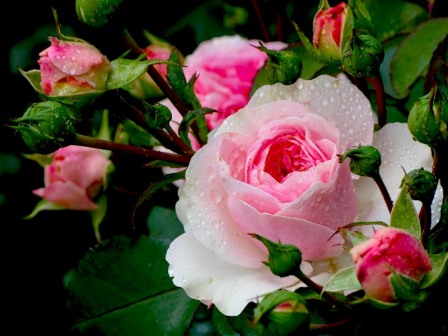 If you decide to plant roses in your garden to admire their majestic beauty, be sure to find out what diseases of roses are, look at the description and treatment, because your beauties can upset you with illnesses and a fading sad look instead of a luxurious look.
If you decide to plant roses in your garden to admire their majestic beauty, be sure to find out what diseases of roses are, look at the description and treatment, because your beauties can upset you with illnesses and a fading sad look instead of a luxurious look.
Aphids will attack roses, its sawflies and weevils love it, it is susceptible to thrips and cicadas attacks. In addition, the spider mite often settles on rose bushes, inhibiting their growth, the khrushchiki and nut-growers strive to spoil their beauty, gray rot does not spare the bushes in wet weather, black spotting attacks in the heat, their spider mite torments and often powdery mildew torments. And if after describing all these hardships you didn’t lose your desire to plant a beautiful rose in the garden, let's go through all the diseases and dangers that await garden roses, consider the diseases of roses in pictures, find out how to deal with them and how to treat diseased plants , and what preventive measures to apply. And then your roses will rise in all their glory above the garden plants, pleasing to the eye and heart, spreading heavenly aromas in the garden.
You might like it: aquilegia, landing and care in the open ground, photo.
Powdery mildew
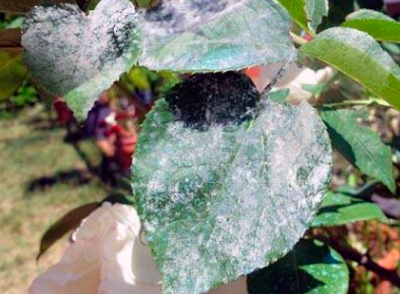
An opposite disease that lies in wait for your pets in dry weather, with a lack of calcium in the soil, as well as with poor watering, if you allow the soil to dry out. As if flour dust appears on the leaves, they are bent, become thickened. This is a mycelium, an already visible part of the disease. The spores of the fungus calmly sit in the buds in winter, and attack the plants with the beginning of summer. The emergence of the disease is also promoted by cold soils, with excessive moisture, light sandstones, an excess of nitrogen in the soil.
As for indoor roses, then in closed rooms this disease is especially rampant if there is stale air, little light, temperature changes. Powdery mildew is especially susceptible to tea rose and its hybrids.
How to fight: as soon as they saw the first signs of powdery mildew, you immediately need to spray the bushes with "Fundazol" or Raik "," Topaz "will also be effective.
See also: phlox perennial, planting and care, photo.
Rust
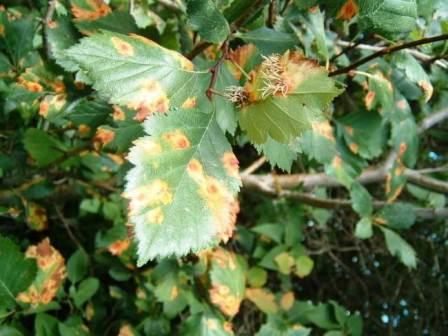
As with powdery mildew, under rust, shoots become thickened and bent. When buds appear near them, orange dust can be noticed - this is the manifestation of the sporulation of the fungus, which has wintered in the tissues of the rose and came into the light to multiply. Then black pads appear from the bottom of the leaves, the leaves turn yellow, fall off.
How to treat: First of all, for prevention, do not fertilize with nitrogen excessively, burn all the affected ground part in the autumn, and in the spring, still not open buds, spray the bushes with iron sulfate (1.5%). Also, loosening the soil, the use of mulch, which also prevents the spread of the disease.
Spider mite
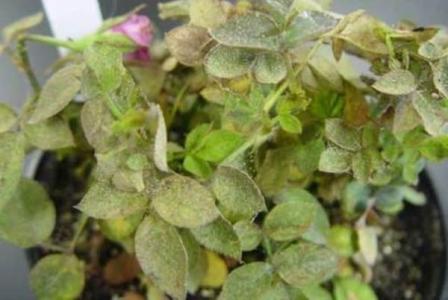
In dry summers, in extreme heat, spider mites affect roses. In this case, the leaves turn yellow, fall profusely, the plant loses its appearance and freshness.
How to treat: Having noticed this problem, immediately buy "Fufanon" and spray your bushes. You can replace it with Iskra-M, it is also effective in combating spider mites. Spray again after about two weeks until the problem goes away.
Black spotting
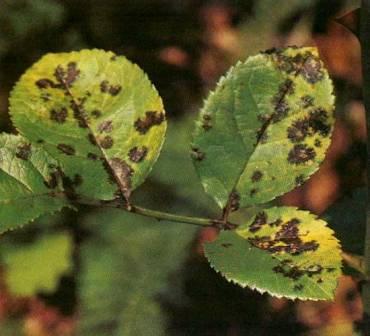
In July-August, you may notice black spots appearing on your pets that contribute to the falling of brown leaves. This is a fungal disease, and its development is facilitated by dampness, dew, cold nights, thickened planting, and low lightness of the site.
How to fight: in the fall, remove all infected foliage very carefully and burn. In spring, as with rust, spray with copper-containing preparations.Repeat treatment after heavy rains and growth.
Gray rot
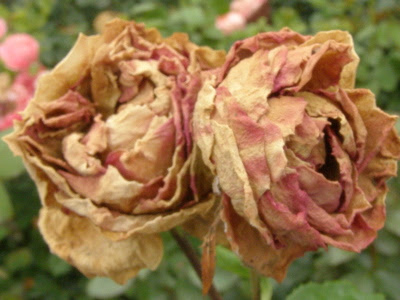
If you notice that your roses are trying to dissolve the buds, and they have become covered with fluffy white bloom and rot, instead of pleasing blooming flowers, they were attacked by gray rot. Fogs contribute to the progression of the disease, the abundance of morning growth, irrepressible rains, and in general, excessive humidity, as well as late evening watering, in which moisture is kept on the leaves for a long time.
How to treat: the drug “Euparen multi” is most effective in this case, they urgently need to process rose bushes at the first appearance of formidable signs. Also, when paired with spraying, spill the bushes with Fitosporin or Gamair.
See also: calendula - growing from seeds when to plant.
Bacterial cancer
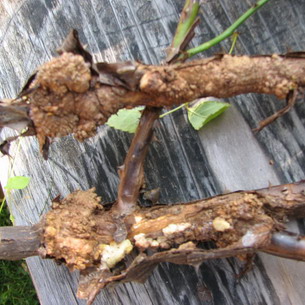
This muck strikes the roots, and rarely appears above the ground. You need to carefully consider the root neck, and in the presence of outgrowths that appear, urgently take measures, because your plant can easily die if the growths close together, forming a ring. The development of cancer is particularly promoted by dampness, an abundance in manure fertilizer, and accidental root injuries.
How to treat: destroy the growths, deeply cutting them, and process with green. It is better to dig up the plant, do these procedures, hold the roots in a weak solution of copper sulfate (about 1%), rinse, make a mash of clay and sand, dip the roots into it and then plant it in a new place.
Green aphid
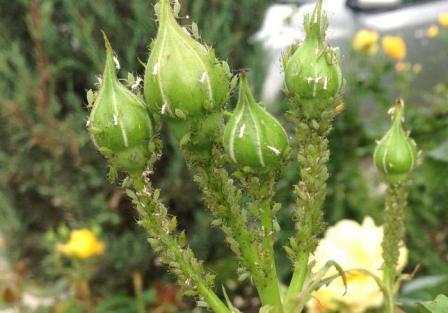
Very much this small living creature loves roses and can do great harm to them. In spring, larvae crawl out of the laid eggs, then grow into wingless females and begin to multiply intensively, sucking out all the juices from your roses. The peak of reproduction overtakes in June and a small dirty trick malice until the end of summer. Aphids often do not allow buds to open; shoots bend from it.
How to fight: as soon as you notice signs of the appearance of aphids on roses, immediately apply “Confidor” or “Bison”. Do not calm down on this, repeat the procedure several times in a couple of weeks until all the aphids disappear.
Leaf burn
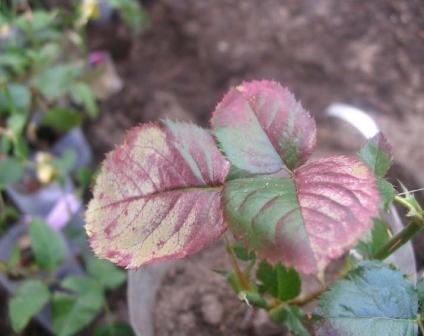
This is also a serious fungal disease, showing itself in red spots, darkening over time, and brown bordering of the leaf. It may, abundantly spread, lead to the death of the entire bush or individual branches. Particularly conducive to its development is too dense shelter for the winter, during which humidity is increased.
How to fight: Remove shelter from winter early, with the first warm days, immediately clean and burn affected areas, spray with copper-containing preparations. In the winter, when you are planning to cover the bushes, wait for the dry weather, remove all unripe shoots, cut the leaves as well, spray with Bordeaux mixture (3%).
Take a look: flowers for the garden, perennials photo with names.
Thrips

Light varieties of roses can be particularly susceptible to thrips attack, the foliage is covered with small red dots, and the leaves become a silver hue, while the flowers quickly fade. Especially love thrips roses, growing in comfortable conditions in nooks and crannies. In spring, thrips fly to the weed roses and settle there, sucking juices from the buds and shoots.
How to fight: All aphid control products are suitable for thrips control.
Scoops
Caterpillars of a scoop can coolly damage your bushes, leading them to an unattractive look. They work at night, lurk in the ground during the day. As soon as you notice damage to the leaves characteristic of the scoop, immediately spray them after sunset with the preparations that we described when the aphids were damaged.
Beetles
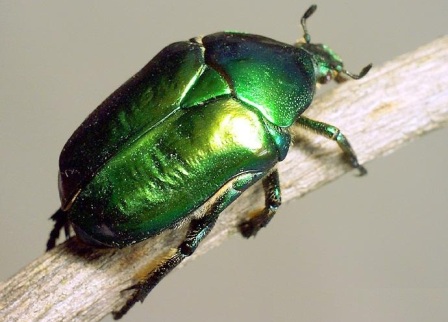
These insects can bring many problems to the gardener when growing roses.Of the beetles, the most dangerous for roses are bronzes and weevils.
Bronze, similar to the May bug, with shiny golden wings, loves light tones of a rose. Settling on a plant, a beetle nibbles buds, eating stamens. By the end of summer, bronzovka pupate, winter in the ground and fly out again in the spring.
How to fight: there is only one known way to combat bronze - early in the morning when they are sitting motionless on the bushes. collect them with your hands.
Weevils - this small pest, gnawing leaves, can harm your roses. During the day, they sit out in zemlyotska, and at night develop activity along with their legless larvae, which eat roots. If an excessive amount is allowed, the plant may die. They are especially dangerous for bushes growing in the shade or in thickened plantings.
How to fight: one of the insecticides can help to remove weevils, and do not delay this measure.
Take a look: do-it-yourself garden and garden, not like everyone else, interesting ideas.

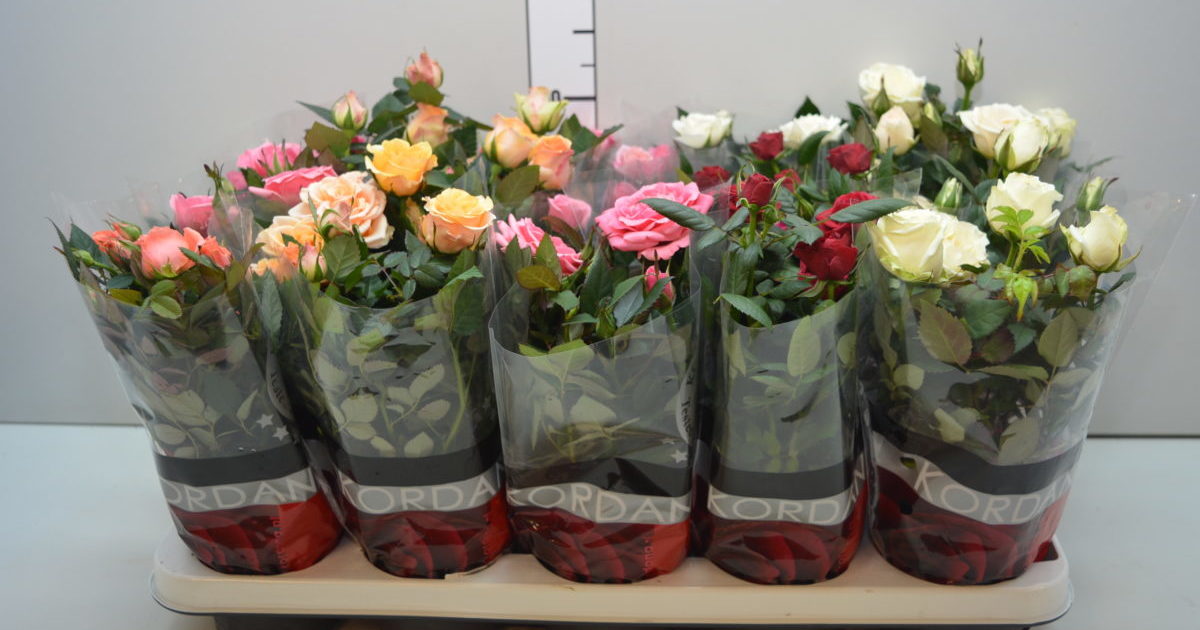
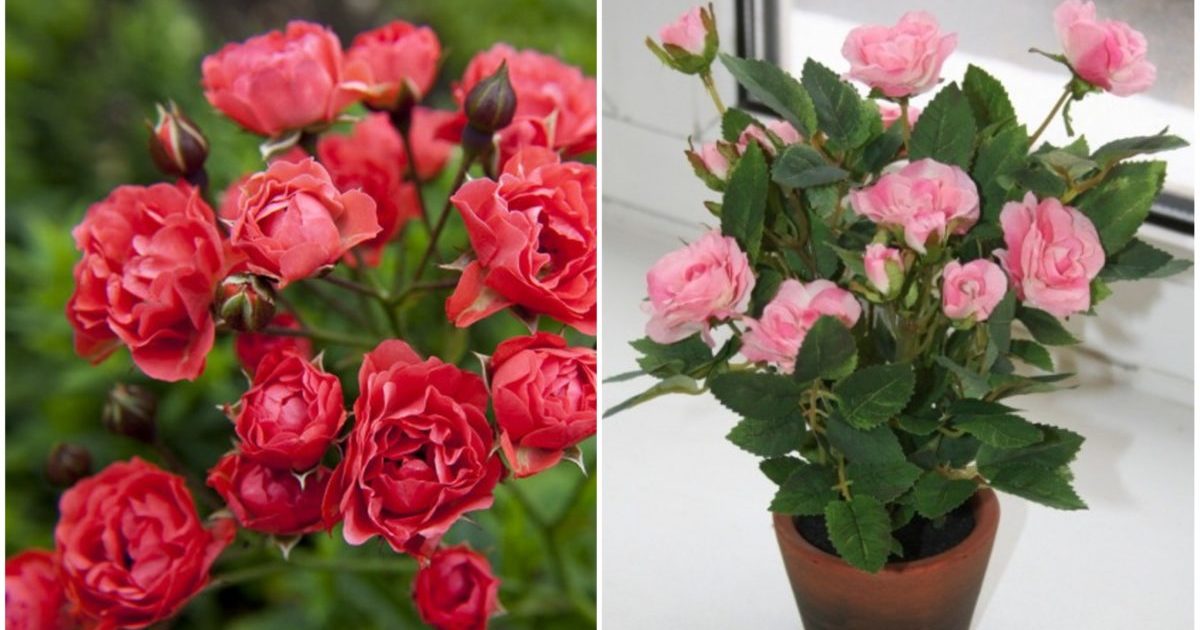
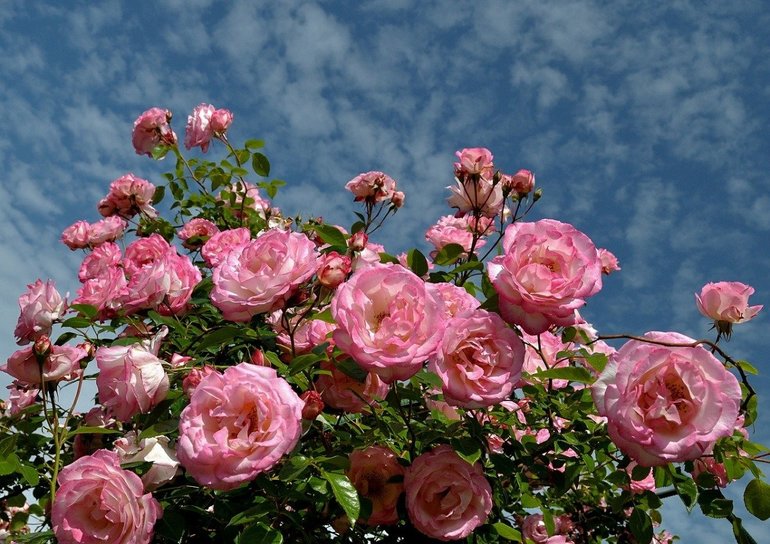
 Shelter of roses for the winter: at what temperature does the robot hold
Shelter of roses for the winter: at what temperature does the robot hold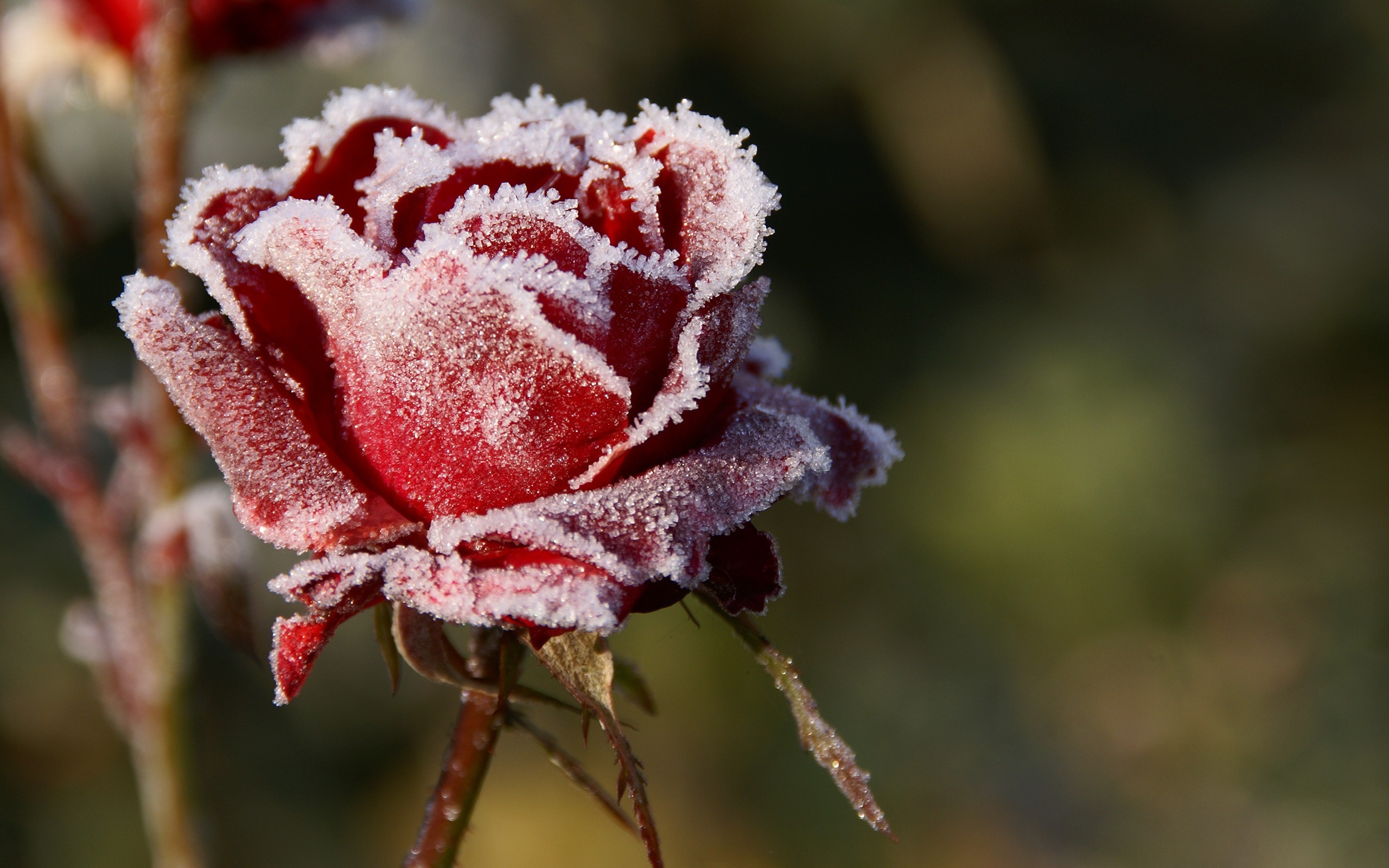 How to prune roses in the fall: timing, pruning rules, pros and cons
How to prune roses in the fall: timing, pruning rules, pros and cons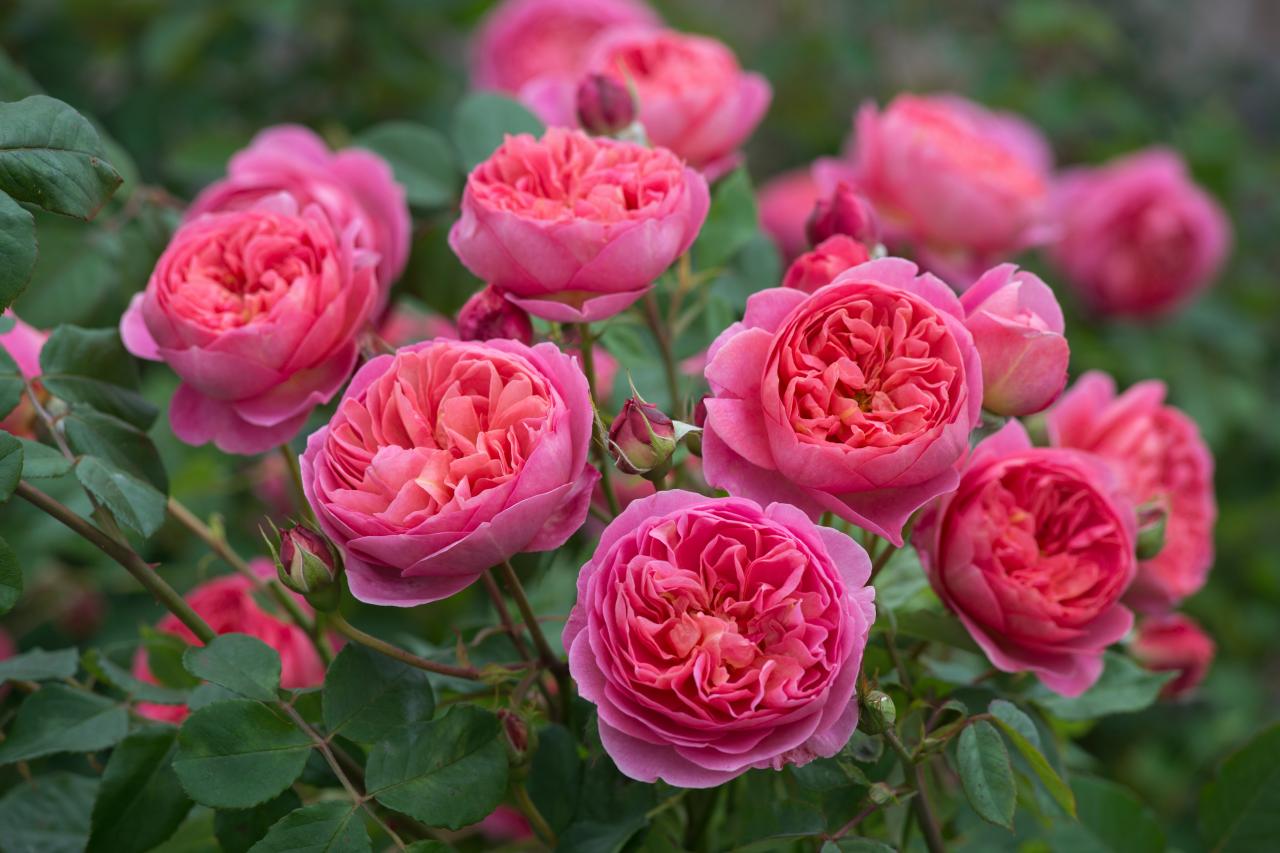 What are the varieties and types of roses
What are the varieties and types of roses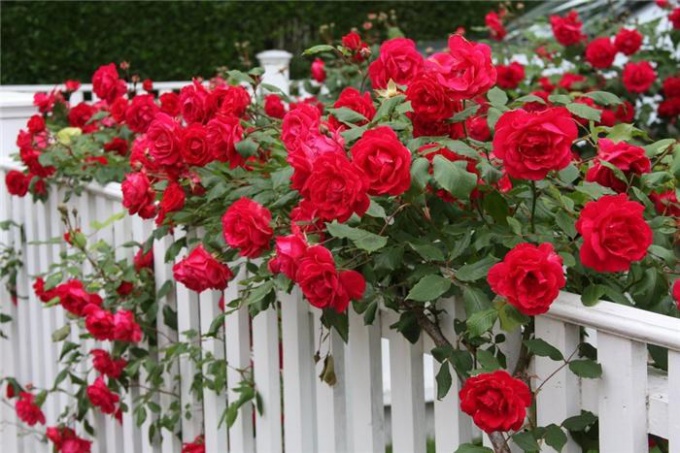 How to process roses with iron sulfate in autumn: proportions, advantages and disadvantages
How to process roses with iron sulfate in autumn: proportions, advantages and disadvantages